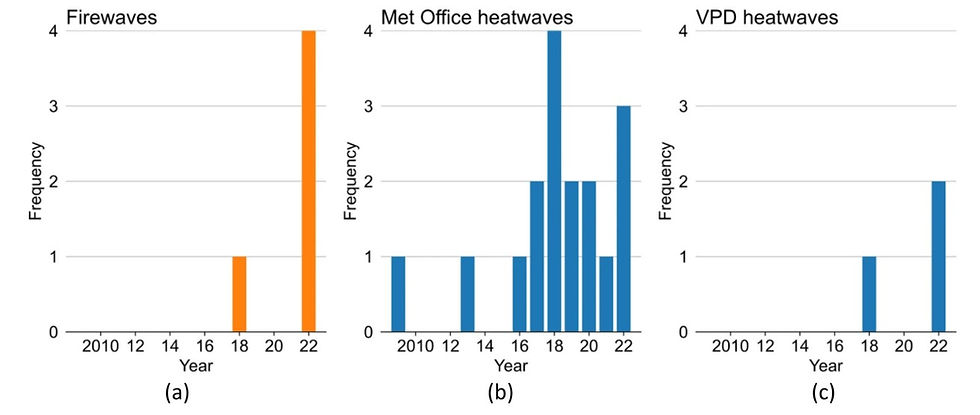Heatwaves, Drying Vegetation, and London’s 2022 Wildfire Crisis
- Rob Beeson

- Aug 14
- 1 min read

The summer of 2022 saw London face its worst wildfire outbreak on record, fuelled by extreme heat and parched green spaces. On 19 July, the London Fire Brigade (LFB) had its busiest day since the Second World War.
Researchers examined data from 2009–2022, linking weather patterns with wildfire records. They found that vapour pressure deficit (VPD) - a measure of how quickly vegetation dries out - was the single strongest predictor of wildfire risk in the city, explaining up to 61% of the variation in fire numbers.
By comparison, relative humidity explained 44% of the variation, and maximum daily temperature 42%. This suggests that while hot weather matters, the speed of vegetation drying is the real driver of wildfire outbreaks.
The study also noted that the Met Office’s current heatwave definition - designed for public health - does not reflect how vegetation dries and becomes fire-prone. The authors propose a new, VPD-based definition to better forecast and prepare for extreme wildfire events.
They introduce the term firewave to describe sudden, intense bursts of wildfire incidents - a warning of when emergency services may be pushed to breaking point.
For rural and moorland managers, the findings reinforce a key point: it’s not just the heat, but how dry the vegetation becomes, that determines wildfire danger - and understanding these conditions is vital for planning controlled burns, habitat management, and fire prevention.
Takeaway: Drier vegetation, not just hotter weather, is the critical warning sign for wildfire risk - knowledge that can help land managers act before fires start.



